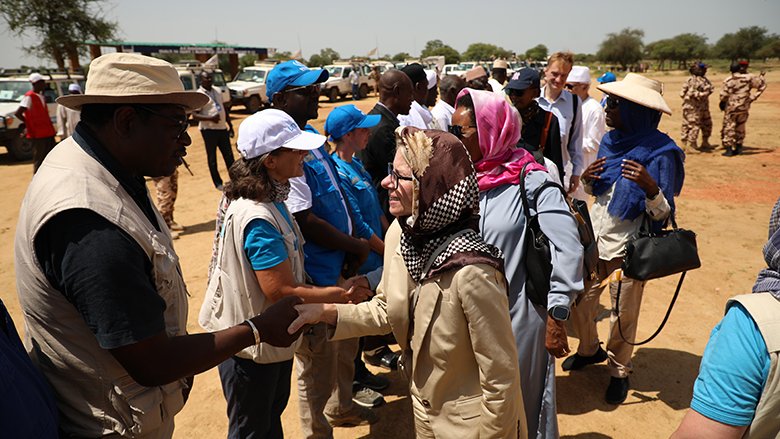Viewed from above, Ourang, a temporary transit settlement hastily set up to accommodate an influx of refugees from Sudan, looks like a constellation of white dots scattered on both sides of Adré, a small town on the Chad-Sudan border, 620 miles from N’Djamena, the capital of Chad.
Built with record speed, the camp was set up to accommodate a large influx of refugees fleeing violence and conflict in Sudan, their home country. The makeshift settlement, little more than a collection of tarpaulin tents, predominantly shelters women and children who have recently fled Sudan, each with a heart-wrenching story. Within the compound, two larger tents store food and kits containing items such as mats and basins for the refugees, who have left everything behind. Yet even these meager supplies prove to be scarce, and the tales of survival paint a harrowing picture.
Fatna Adam Mahamat, a mother of five, was among the fortunate ones who managed to cross the border alive. “Some people came to our home, subjected us to a brutal assault, and stole our money,” she said. Her husband wasn’t so lucky: he was murdered on the journey to Chad.
Susana Borges, the Emergency Coordinator for Doctors Without Borders in Adré, oversees a health center that provides support to children and mothers with infants in the gynecological unit. “The most urgent health concerns we face,” said Borges, “are malaria, diarrhea, and malnutrition. We’re doing our best, but the needs are massive.” Despite her team’s best efforts, the sheer scale of the crisis is overwhelming.
Chad, a nation grappling with immense development challenges, including climate shocks and food insecurity, now hosts one million refugees, amounting to one in every 17 people in the country. It’s a staggering statistic for a country with a poverty rate of 42%. Yet, despite all these challenges, Chad has kept its borders open, welcoming refugees and granting them equal rights, including the right to go to school and the right to move freely.

